Generality
Chicken is considered to be one of the leanest and healthiest foods of animal origin. In reality - although it is undoubtedly a product with a medium-low lipid content - as for all other foods obtained from slaughter, the presence of fats in chicken meat is also variable; this variability is linked to the cutting, processing, farming method, age, sex and subjective characteristics of the organism in question.

Chicken meat is among the most important in the meat trade; this is fundamentally due to two aspects of a totally different nature: the first concerns the price (contained and sustainable even for the medium-low income brackets), the second concerns the health aspect (emphasized by the negligible content of triglycerides). that chicken meat, more precisely BREAST, is the most consumed food in dietary regimes for clinical nutrition and in those aimed at aesthetic culture or sport. It is also essential to remember that chicken meat is one of the few foods defined as HYPOALLERGENIC, which is why it is also used in elementary diets after the weaning of infants.
However, chicken meat is NOT without its risks or negatives. This animal is also subject to parasitic infestations and viral or bacterial infections, as well as being the subject of intensive breeding and pharmacological abuse. It is therefore no coincidence that, among organic farming-breeding products, chicken meat represents one of the most commercially successful foods (also thanks to the fact that, although it is more expensive than non-BIO chicken, it still retains an affordable price ).
Chicken: This Stranger ...
Unfortunately, not everyone has had the privilege of spending their childhood among cows, chickens, rabbits and pigs. Anyone who is stranger to country life will hardly be able to give an accurate description of the chicken; obviously I am not talking about the physical appearance of the animal, but of its biological nature! Is the chicken a species or a breed? Is it male or female? Is it fertile or sterile? Does it lay eggs? Let's try to clarify.
The chicken, also called domestic chicken, according to the Linnea classification, is an animal of Asian origin belonging to the "Order Galliformes, family Phasianidae, Genus Gallus, Species gallus, Subspecies domesticus; in practice, according to its "identity card" the chicken should respond to the name Gallus gallus domesticus.
This bird has accompanied man for about 6,000 years and its functions are different, but mainly food. However, one detail should not be overlooked, namely that Gallus gallus domesticus It is NOT only synonymous with chicken, but also with rooster, hen, capon, and other farm products. In short, we define:
- chick (male and female very young, up to 3-4 months of life and just over half a kilogram of weight)
- wheat chicken (male and female from 5 months to one year, and from 700g to 1kg in weight)
- chicken (male and female until sexual maturity is reached, about 1 year and 1.5kg in weight)
- pollanca (castrated female before she begins to lay eggs)
- cockerel (mature male up to 6 months)
- pullet (young oviparous female)
- hen (oviparous female that has already seen a breeding season)
- free-range rooster (male, up to 10 months)
- capon (castrated male at 2 months reaching 2.5kg).
In practice, the chicken is a specimen of Gallus gallus domesticus young (700-1500g) and still unable to reproduce (from which time it will be called rooster if male or hen if female). Not surprisingly, the name chicken comes from the Latin "pullus", that is, young animal. However, for some, the chicken is also the hen that has exhausted the ability to produce eggs.
Chicken Breeding: Correlations with Meat Health
As with all foods, both animal and vegetable, chicken meat also varies its chemical-physical characteristics according to the age and the life span of the organism. In this regard, if from an organoleptic point of view there is an abysmal qualitative difference between a free-range chicken and another intensively reared, it is more difficult to grasp the differences from a chemical / nutritional point of view.
Intensively and conventionally reared chicken meat is often accused; this charge does not derive so much from feed, whose composition more or less faithfully traces the "nutritional contribution of a wild chicken, but from"intensive use of drugs. To explain this need, it is necessary to consider that, given the density of the farmed population (30-35kg per m2), the risk of disease for chickens is high, to say the least. Suffice it to say that the competent authorities require the recording of the DAILY mortality rate, as well as the daily observation of the physical condition of the animals with documentation of abnormal deaths or behavior / reactions of dubious health. This means that very often the measures for the prevention of diseases of farmed chickens (respect for the biological vacuum, ordinary disinfections and disinfestations, etc.) are not enough, which gives rise to NOT a few DOUBTS! vaccines) provided that these actions are recorded and communicated to the processing slaughterhouses that receive them. This is necessary as all drugs and active ingredients with pharmacological activity can leave unwanted residues in the meat. These are molecules potentially harmful for the induction of tumors , cardiovascular diseases, toxicity for the fetus etc. and, as if that were not enough, they favor the induction to antibiotic resistance ALSO in man. Therefore, any type of pharmacological treatment that can be used must be prescribed and dosed ONLY by a doctor-veterinarian and it is necessary to respect the minimum suspension times to allow the disposal of the drug by the chicken and avoid the risk of finding it in the meat.
The specification therefore seems very clear, but probably not enough to be respected in detail. According to a "survey recently carried out by" Altroconsumo ", on a sample of 45 chickens found in the markets between Milan and Rome, 85% of the meat showed TRACES of antibiotics. Obviously, we are not aware of either the concentrations or the chemical forms of the molecules involved; probably these are insignificant values.
On the other hand, for "par condicio", we remind you that the farms of small animals (such as chickens, hens, etc.) are scarcely interested in the use of anabolic hormones and accelerators of development and growth; this is due not so much to the awareness or correctness of the farmers, but to the lack of convenience in the cost / yield ratio.
In practice, thanks to the intensive use of drugs in poultry farming, if on the one hand we are sure not to take steroid hormones and not to contract an infectious disease (salmonellosis, cholera, avian, etc.), on the other we could select antibiotic-resistant strains capable of seriously damaging human health.
ATTENTION! It is a "common opinion that home-raised chicken meat is much healthier than commercial meat; unfortunately, also in this case it is necessary to make a distinction between" conscious "self-production and" spannometric "self-production. In the first case, the breeders of chickens comply with all health and veterinary rules, avoiding the various risks of contracting infectious diseases such as salmonellosis, leptospirosis, etc. In addition, they feed the animals correctly, use NOT contaminated or dangerous window materials, and protect the chickens from " exposure to toxic molecules. In the second case, however, the risks for animal health can significantly increase and, consequently, also those for humans. The clear examples are: the absence of veterinary checks, the ignorance of clinical signs that indicate a pathological state of animals, the use of animal carcasses of dubious origin for the feeding of chickens, the building of chicken coops with friable asbestos-containing asbestos and the scratching of birds during pesticide treatments in the countryside.
With regard to this last factor, only 30-40 years ago, when the laws and regulations were less severe and articulated, leaving the chickens scratching during the chemical treatments given to the orchards, we could witness an impressive phenomenon: egg production without shells that stopped when pesticide exposures stopped.
Nutritional Characteristics
Chicken meat is considered among the leanest on the market; in reality, it is only a partially shareable belief.
First of all, we specify that the anatomical portion richest in triglycerides of the chicken is made up of the skin. In fact, in this animal, a large part of the adipose tissue is concentrated in the integumentary system and can be easily separated by peeling and cooking. when cut, it is possible to observe how the quantity of intramuscular lipids is decidedly moderate compared to the tissues of other animals. More specifically, variations are observed that oscillate from 6g / 100g of lipids in raw skinless meat, with an average of 3.6g Considering the cuts of meat with raw skin, however, fluctuations that range from 14g / 100g (of the wing) emerge, with an average of 10.6g / 100g.
Also with regard to cholesterol, between skinless cuts and those with skin there are significant differences, equal to about 15 / mg per 100g of the edible portion. The average cholesterol in raw skinned chicken is in fact 93mg / 100g, while in raw skinless chicken it is 75mg / 100g. Generally speaking, chicken meat (even if with skin) never exceeds 100mg / 100g of product (OFFALS EXCLUDED !!!).
The breakdown of fatty acids is in favor of the saturated ones compared to the polyunsaturated and monounsaturated ones taken individually; however, by adding the latter two, we note a prevalence of the overall unsaturated over the saturated ones.
From a strictly nutritional point of view, the function of chicken meat is to provide proteins with a high biological value in the diet. Like other animal proteins, in fact, even those of chicken have all the essential amino acids in more than satisfactory quantities. The "limiting" amino acid is tryptophan, while the 3 most present are: glutamic acid, aspartic acid and lysine. The protein intake of chicken meat is on average between 19.0 and 19.4g / 100g of the edible portion, while the richest cut in peptides is undoubtedly the breast, with more than 23g / 100g.
Chicken meat does not contain carbohydrates and the caloric intake is mainly determined by proteins and fats. Also in this respect, there are significant differences between the various cuts but, on average, the one with raw skin provides 171kcal / 100g and the other (without raw skin) 110kcal / 100g.It can be deduced that, being leaner, the cut with the lowest caloric intake of chicken meat is precisely the raw breast without skin: 100kcal / 100g.
As far as mineral salts are concerned, chicken meat is not among the most prized. Usually, the introduction of meat is intended to promote the contribution of bioavailable iron, which is rich in this kind of food. However, in this case we can see an average of about 0.6-0.7mg of iron per 100g of edible portion and, in the famous breast, only 0.4mg / 100g. On the other hand, potassium and phosphorus are present in satisfactory quantities.
Last but not least, vitamins. In fact there is not much to say, except that those contained in portions "interested" in chicken meat are: Niacin (vit. PP), with 5.00-5.80 mg / 100g of edible portion (with and without skin), and cyanocobalamin (vitamin B12).
Please refer to the nutritional considerations on sausages (or other derivatives) of chicken meat in the article: wurstel.
Chicken Video Recipes
Baked Stuffed Chicken with Potatoes - No Added Fats
Problems with playing the video? Reload the video from youtube.
- Go to the Video Page
- Go to the Video Recipes Section
- Watch the video on youtube
See also: video recipes based on chicken breast
Other Foods - Amatriciana Meat Lamb - Lamb Meat Duck - Duck Meat Pork Chop Florentine Steak Boiled Broth Raw Meat Red Meat White Meat Beef Horse Meat Rabbit Meat Pork Meat Vegetable Meat Lean Meat Sheep and Goat Meat Carpaccio Ribs Cotechino Cutlet Snails or land snails Pheasant and Pheasant meat Guinea fowl - Guinea fowl meat Pork fillet Chicken Hamburger Hot Dog Kebab Patè Chicken breast Turkey breast Chicken - Chicken meat Meatballs Porchetta Quail - Quail meat Ragù Sausage Game Zampone OTHER ARTICLES MEAT Categories Food Alcoholic Meat Cereals and derivatives Sweeteners Sweets Offal Fruit Dried fruit Milk and derivatives Legumes Oils and fats Fish and fishery products Salami Spices Vegetables Health recipes Appetizers Bread, Pizza and Brioche First courses Second courses Vegetables and Salads Sweets and Desserts Ice creams and sorbets Syrups, liqueurs and grappas Preparations of Basic ---- In the Kitchen with Leftovers Carnival Recipes Christmas Recipes Diet Recipes Light Recipes Women's Day, Mom, Dad Functional Recipes International Recipes Easter Recipes Recipes for Celiacs Recipes for Diabetics Recipes for Holidays Recipes for Valentine's Day Recipes for Vegetarians Recipes Protein Regional Recipes Vegan Recipes
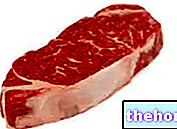

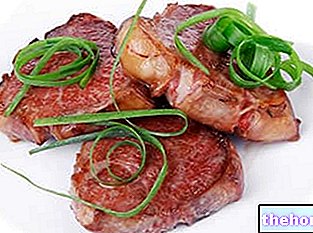
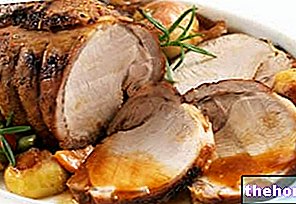
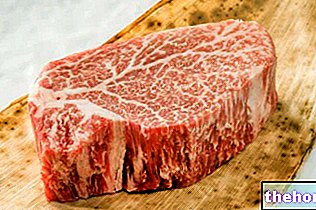
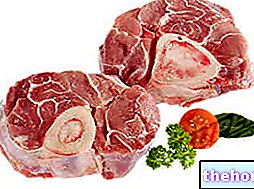









.jpg)











